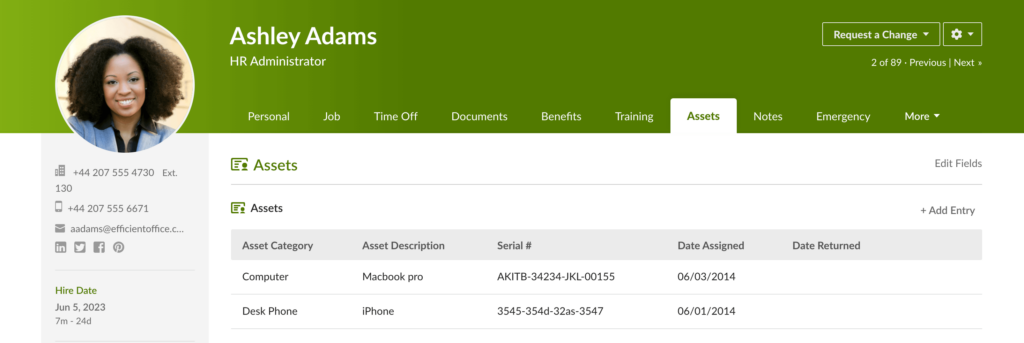Community resources
Community resources
Community resources
Integrating Jira Service Management with BambooHR Assets
In this article, we will explore how to integrate Jira Service Management with BambooHR Assets and highlight the benefits of this automation.
Assets in BambooHR
Before we dive into the integration details, let’s understand what BambooHR Assets are. Assets is a feature in BambooHR that enables organizations to link IT assets to employees. These assets could include computers, smartphones, software licenses, and more. With BambooHR Assets, HR teams can easily track and manage the provisioning, maintenance, and retrieval of these assets.
Here’s a quick look at the Assets interface:

Use Cases for Jira to BambooHR Assets Integration
The integration of Jira with BambooHR Assets can address various use cases, including:
1. New hire Onboarding
Assigning IT assets to new hires as part of the onboarding process becomes seamless. Any assets allocated can be automatically recorded in BambooHR Assets through Jira.
2. Employee Termination
During the employee termination process, IT assets can be deprovisioned, and their data can be removed from BambooHR Assets, ensuring that no assets are left unaccounted for.
3. Upgrades and Recall
When employees request upgrades or changes to their IT assets, Jira can update the asset data in BambooHR Assets, keeping records accurate and up to date.
BambooHR API Support
BambooHR provides API to manage Assets. Assets are stored as a two-dimensional grid for each employee, and the API offers various methods to interact with this data, including:
- Getting assets table rows for a given employee and table combination.
- Adding a table row to record asset information.
- Updating table rows for asset data.
- Deleting table rows to remove asset records.
Here’s a sample request and possible JSON responses for adding an asset:
Sample JSON Request:
{
"dateassigned": "2024-03-01",
"serial": "AKITB-34234-JKL-00155",
"Asset Description": "Macbook Pro",
"Asset Category": "Computer"
}
Possible JSON Responses:
200: Row added successfully. 400: Invalid or missing required fields. 403: Permission denied. 406: An error with one or more of the fields.
For more details, you can refer to the BambooHR API documentation.
Step-by-Step Demo
To help you better understand how this integration works in practice, we’ve prepared a step-by-step demo.
Chapters
0:00 Introduction
0:33 Using Onlink to Assign a New Asset
1:37 Changing the Status to In Progress
2:09 Checking the Updated Details in BambooHR
JSM Assets to BambooHR Assets Sync
Apart from the scenarios mentioned above, you can also explore more advanced use cases, such as synchronizing assets from Jira Service Management (JSM) with BambooHR. This can automate the synchronization of all employee data and associated dependent schemas, further enhancing the integration’s capabilities.
Benefits of Integrating Jira with BambooHR Assets
1. HR Workflow Automation
The integration simplifies and automates the linking task of asset management, saving valuable time for HR business partners, IT support teams, and employees. Moreover, since data is always in sync between Jira and BambooHR Assets, it minimizes the chances of data integrity issues.
2. Security Policy and Access Governance
The integration provides transparent and clear visibility of all assets within an organization. This visibility is invaluable during security audits and when addressing emergency vulnerabilities. It ensures that organizations can maintain a robust security policy and access governance framework.
Was this helpful?
Thanks!
Prabhu Palanisamy _Onward_
About this author
President
Onward
Ashburn, VA
2 accepted answers
Atlassian Community Events
- FAQ
- Community Guidelines
- About
- Privacy policy
- Notice at Collection
- Terms of use
- © 2025 Atlassian





0 comments